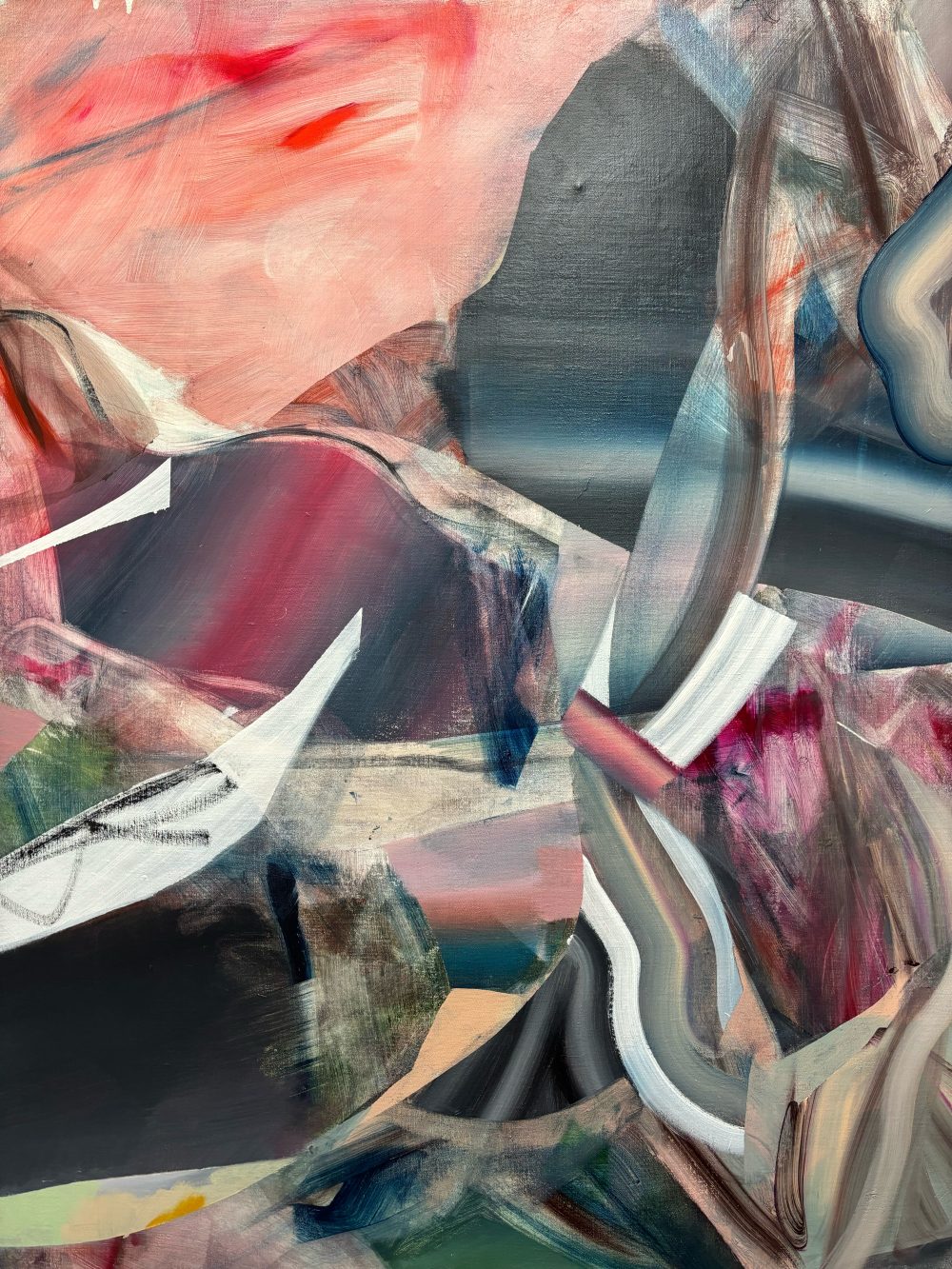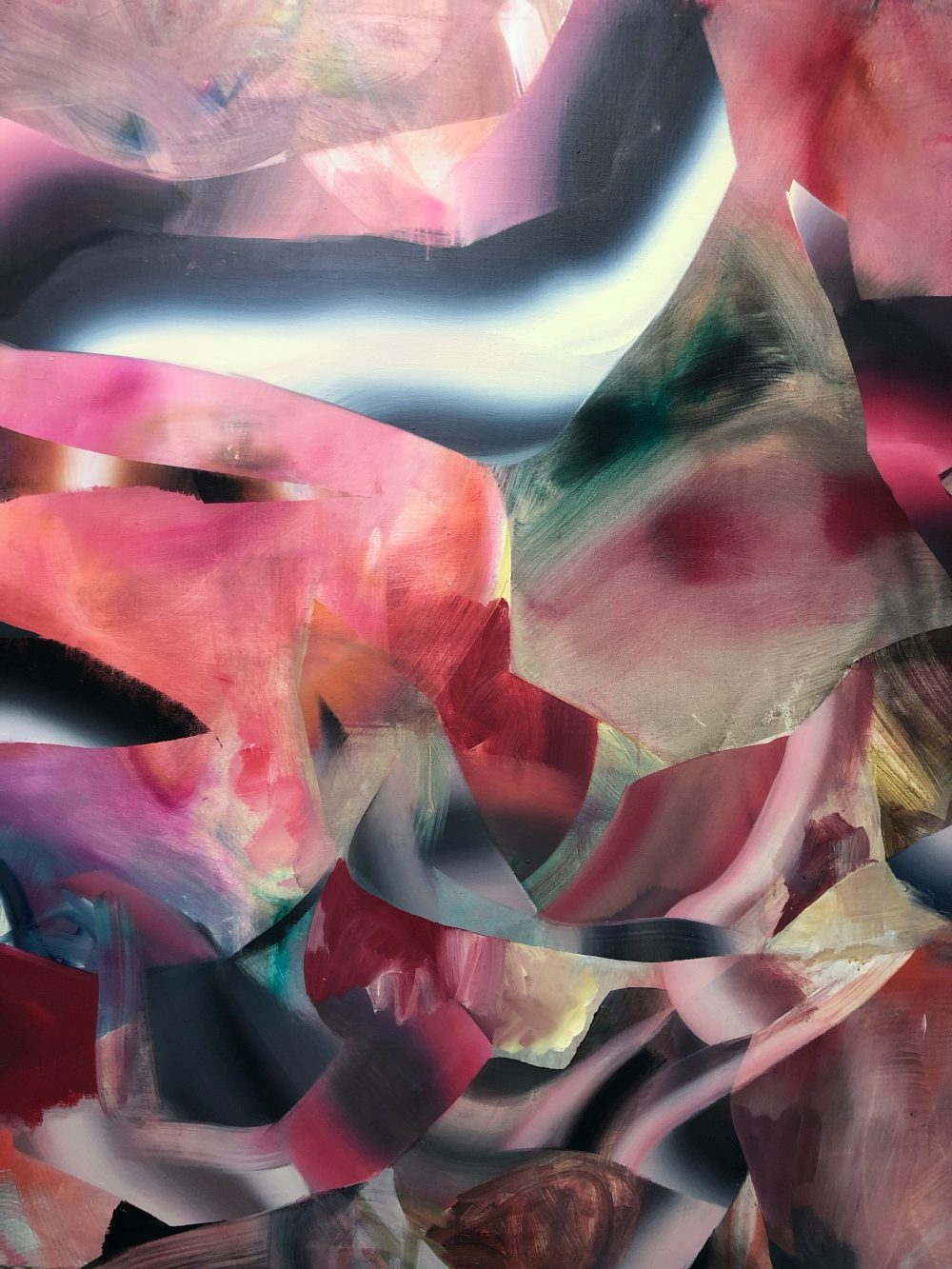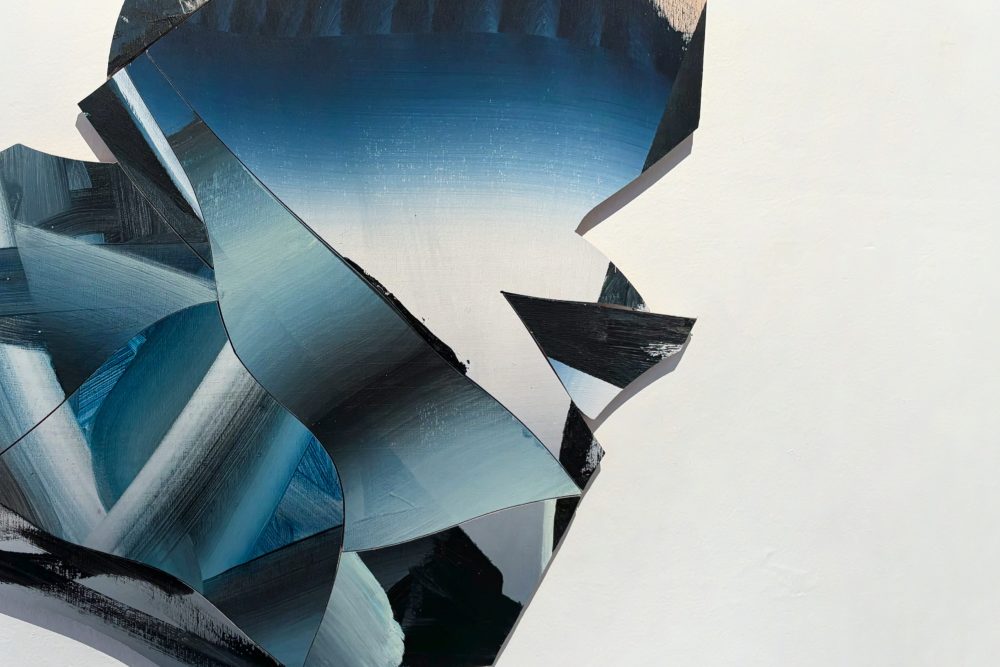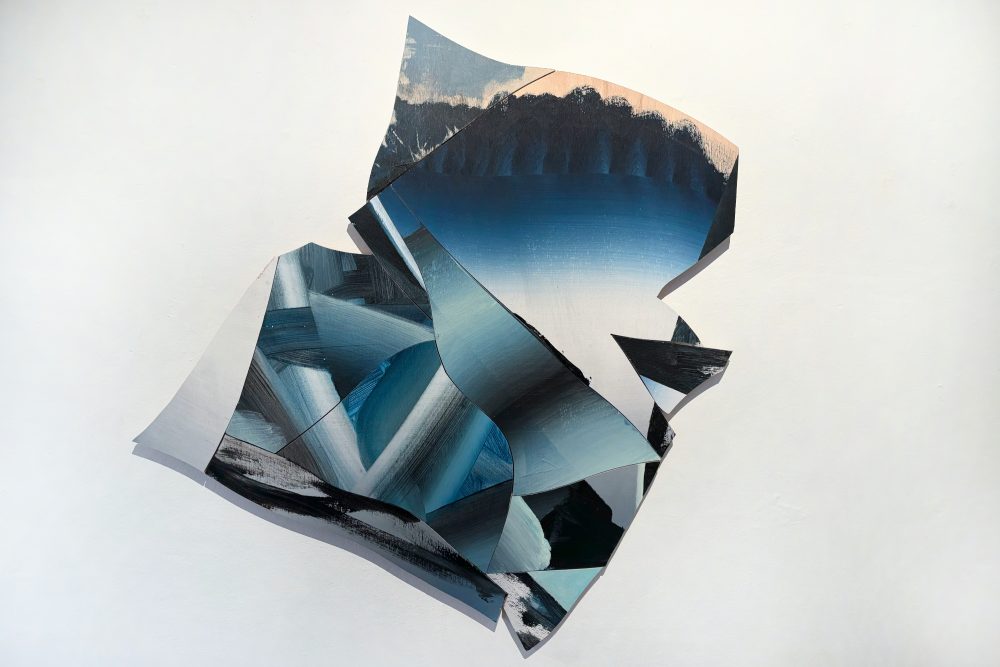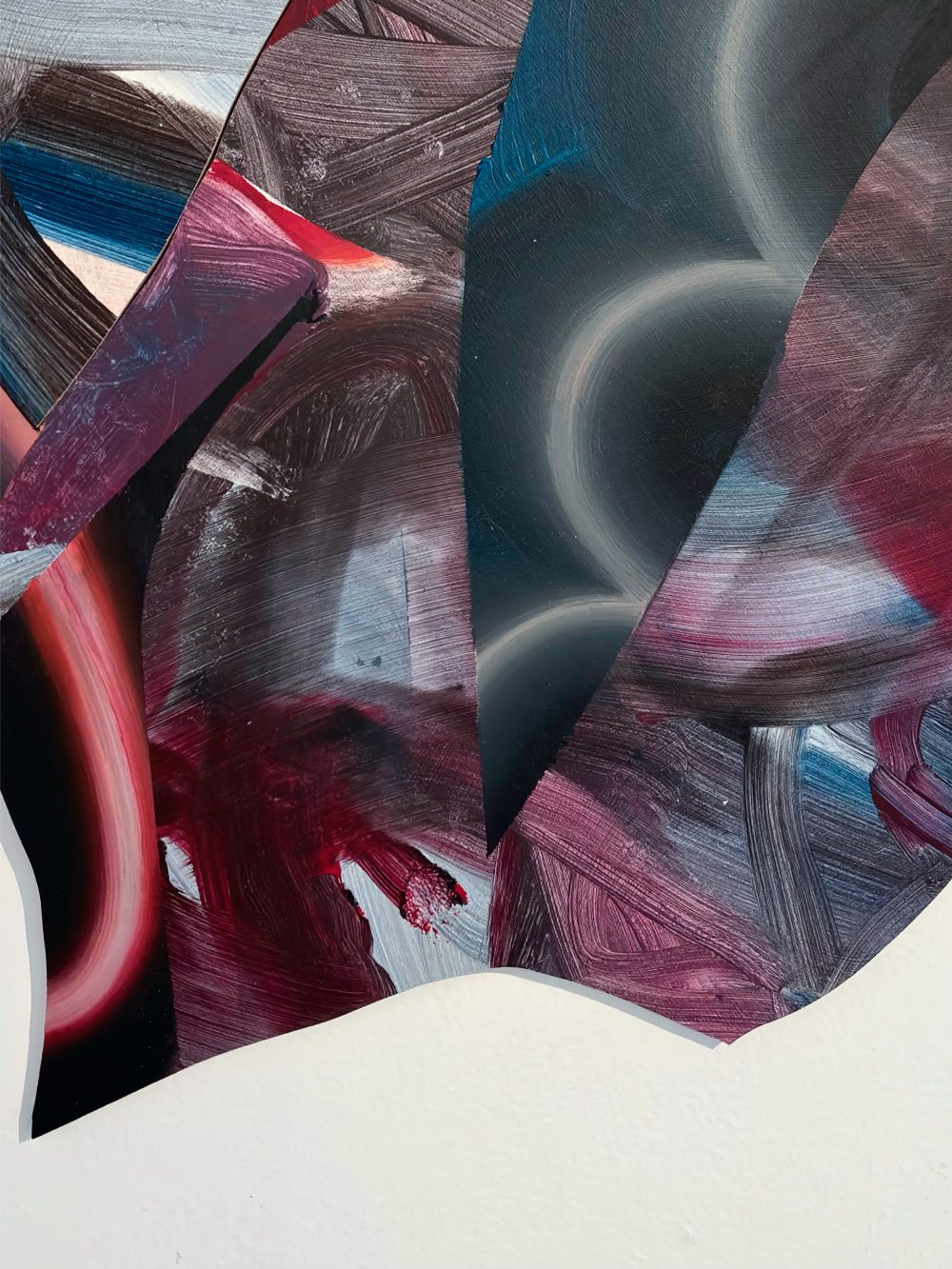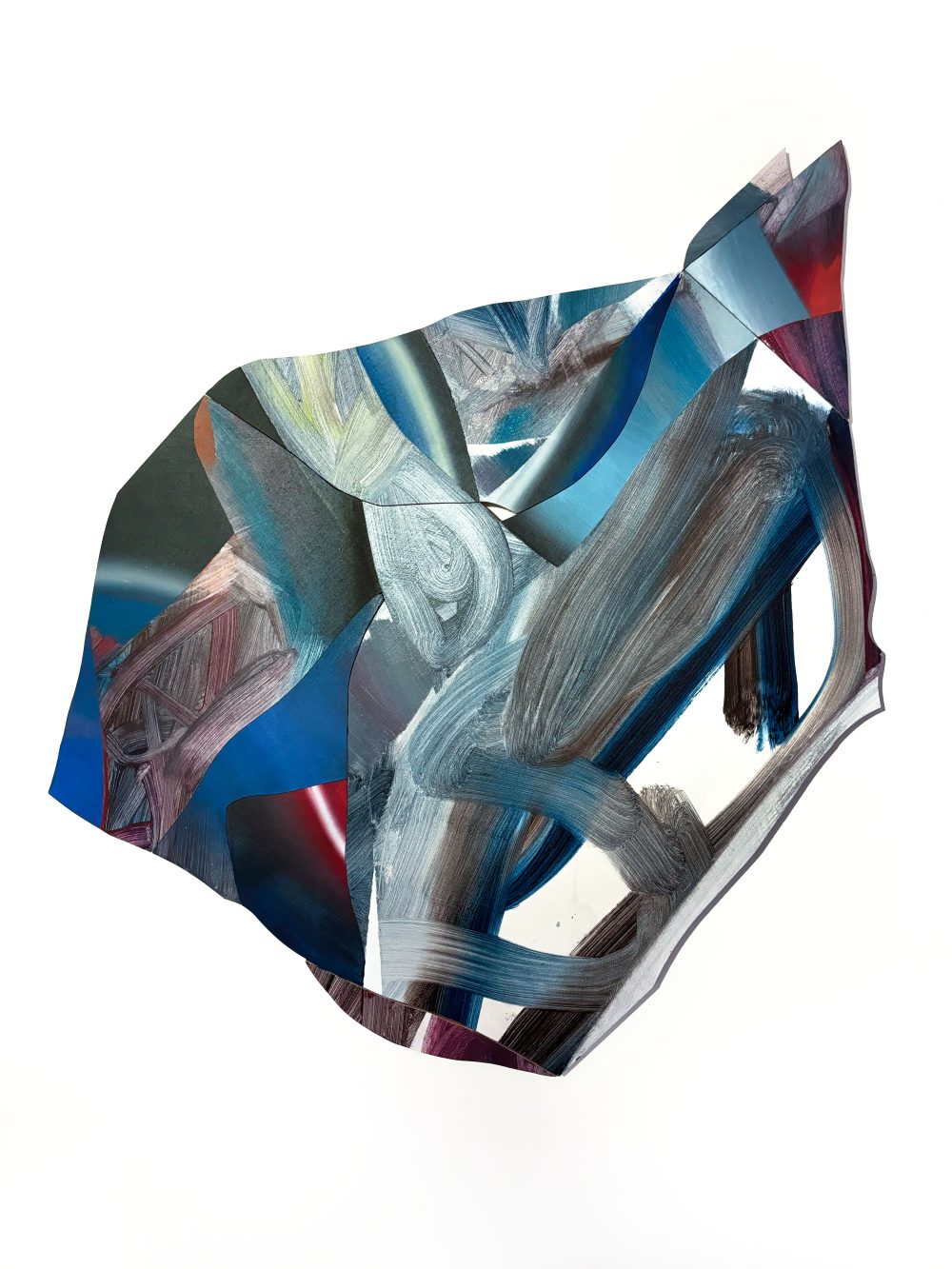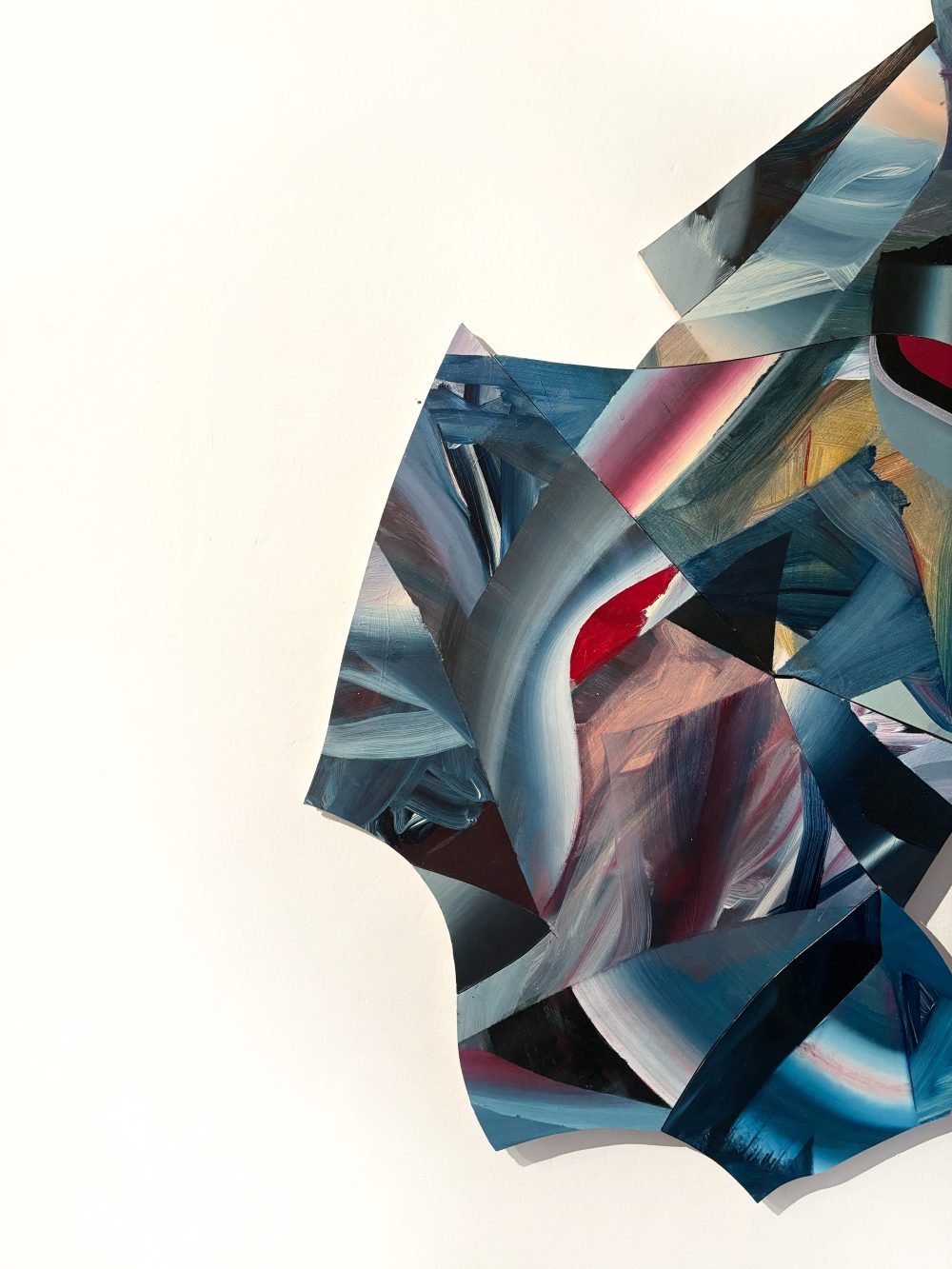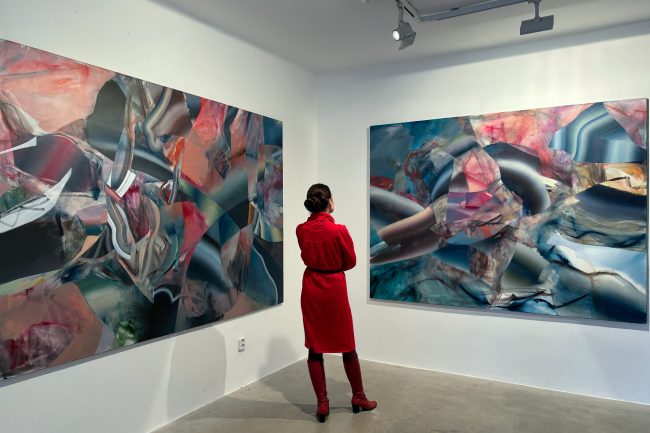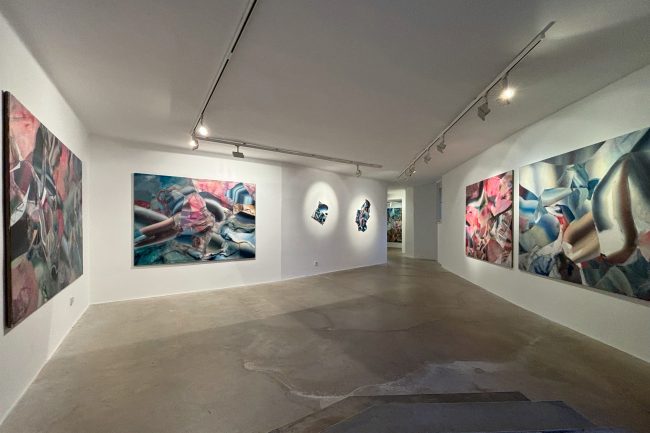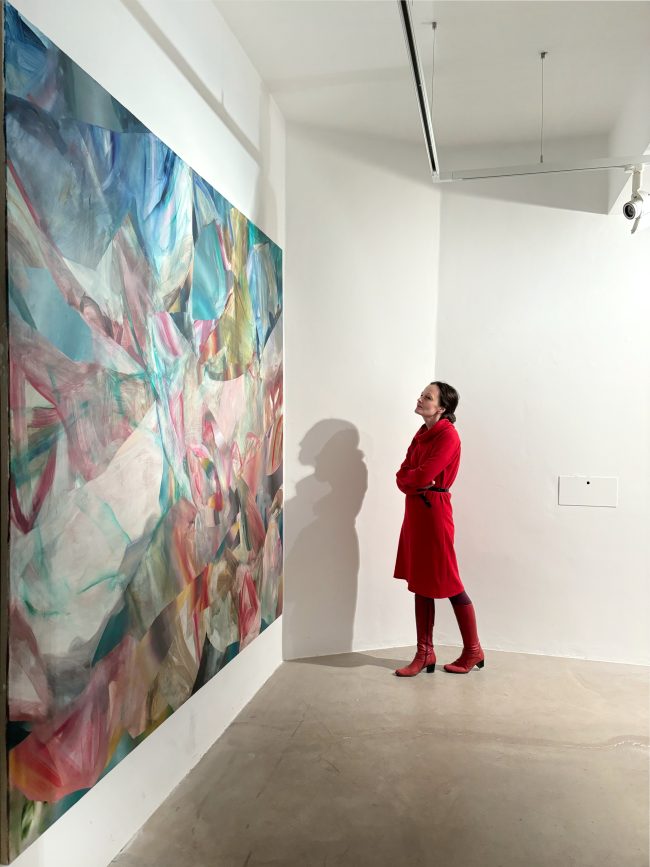Michal Neugarten / SPACES / 14. 3. – 18. 4. 2024 / Pecka Gallery
Galerie Pecka
Vratislavova 24 128 00 Praha 2
+420 773 044 071
http://www.galeriepecka.cz
info@galeriepecka.cz
Michal Neugarten 2023-2024 / Spaces
The exhibition of Michal Neugarten's paintings for the period 2023-24 at Galerie Pecka offers a glimpse into a new and striking form that the artist has discovered after a long period of development. The large-format paintings are almost symphonies of the fusion of otherwise disparate approaches and styles, finding common ground in Neugarten's works. Utilizing almost brutal differences in techniques, the painter creates contrasting spaces that deconstruct both the pictorial space and the image's meaning, fluidly and naturally transitioning to sculptures. These are not just images for the artist, but painting itself, unrestricted by conventional boundaries. Perhaps due to the artist's creative obsession with transcending the confines of contemporary painting, a notably opulent style emerges, akin to a contemporary Baroque, which finds a surprisingly strong resonance in our modern era.
_
Výstava obrazů Michala Neugartena za období 2023-24 v Galerii Pecka, nabízí pohled do nové a výrazné formy, kterou umělec nalezl po delší době vývoje. Malby větších formátů jsou téměř symfoniemi sepětí jindy nesourodých přístupů a stylů, které v Neugartenových obrazech nachází společné hranice. Až brutální rozdíly technik, malíř využívá k tvorbě kontrastních prostorů, které de-konstruují obrazový prostor stejně, jako význam obrazu a volně a přirozeně přechází až k plastikám, které nejsou pro autora jen obrazy, ale malbou samotnou, která není omezena.
Snad i díky tvůrčí posedlosti umělce, překročit rámec současné malby, tu docela nápadně místo prostých obrazů vzniká opulentní sloh jakéhosi současného baroka, které v naší moderní době nachází překvapivě silnou vazbu.
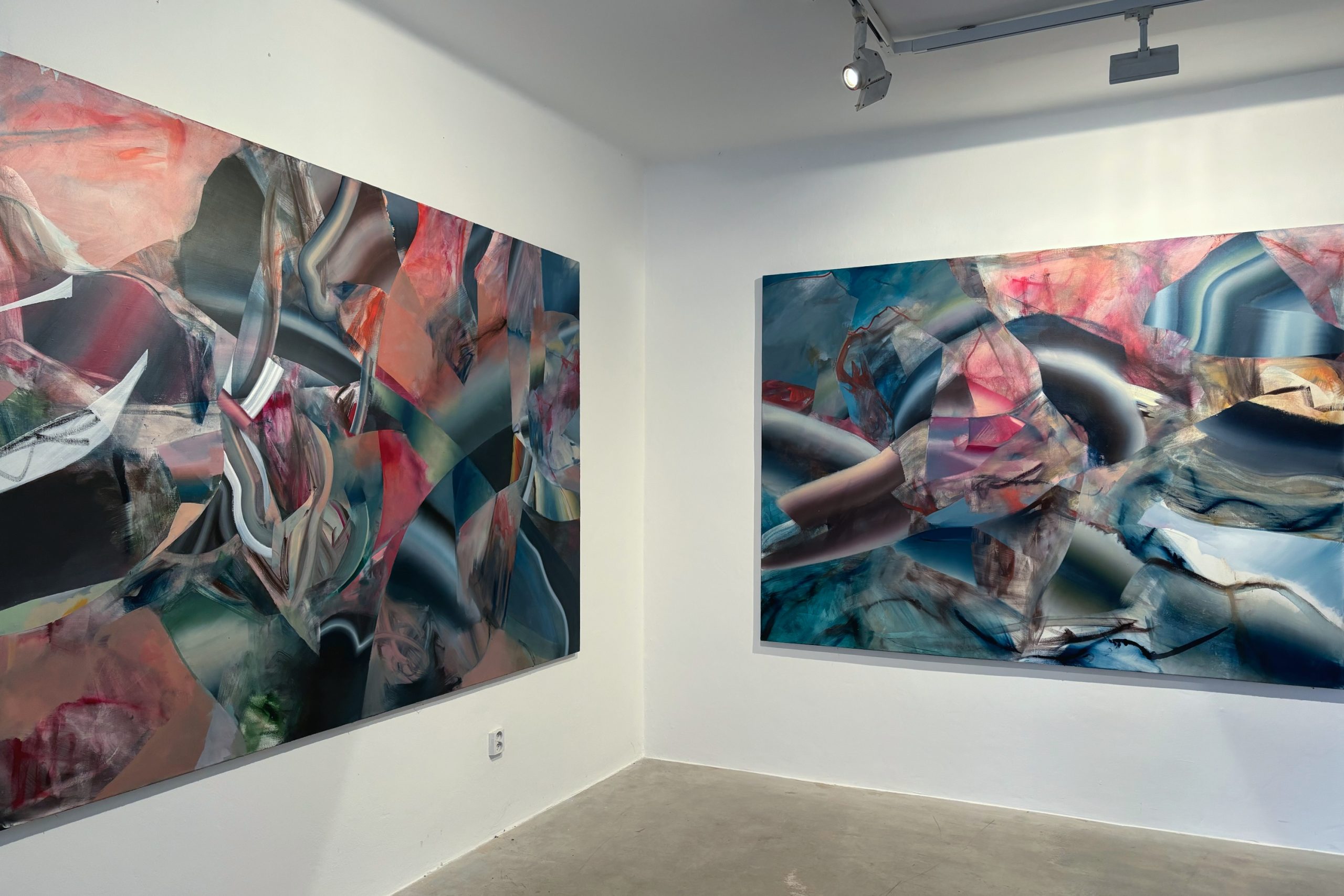
Post-Baroque Palimpsest and Deconstruction of Space in the Paintings of Michal Neugarten
The new paintings by Michal Neugarten, presented at the exhibition Spaces, are a colorful network of forms and depths; it is up to the viewer to choose how deeply to immerse, which direction to take, where the center of Michal's image lies, where it ends, and where it begins. Spaces are like Baroque fluid shards, evoking illusion, dreaminess, unreality, but also connecting to the current, very fluid reality (according to Zygmunt Bauman), making them very contemporary even as they refer to the history of art, primarily to Rubens. Spaces also connect to the current art of the internet, to hypertext; they are an infinite multi-space because behind each single space, other spaces, other surfaces, and depths appear that have no boundaries, thus the images become a picturesque hypertext where one plane leads to another. Spaces are also a palimpsest because forms, depths, and surfaces are layered on top of each other, making the image unreadable, a chimera of endless possibilities for the viewer to understand the work. Spaces are not just about painting but more broadly refer to today's hypertextuality and multifunctionality of the world, to the deconstruction of the image and forms, to palimpsest ciphers, and to the new meanings of infinite depth.
Katarzyna Giełżyńska 2024
Postbarokní palimpsest a dekonstrukce prostoru v malbě Michala Neugartena
Nové obrazy Michala Neugartena, prezentované na výstavě Spaces, jsou barevnou sítí forem a hloubek; divák sám vybírá, jak hluboce se má ponořit, kterým směrem se má vydat, kde je centrum Michalova obrazu, kde konec a kde počátek.
Spaces jsou jako barokní tekuté střepy, evokují iluzornost, vysněnost, nereálnost, ale taky navazují na současnou, velmi tekutou (podle Zygmunta Baumana) realitu, tím jsou hodně současné i když odkazuji na dějiny uměni, především na Rubense.
Spaces navazují také na současné umění internetu, na hypertext, jsou nekonečným multiprostorem, protože za každým jediným prostorem se objevuji další prostory, další plochy a hloubky, které nemají žádné hranice, tak se obrazy stávají malebným hypertextem, kde jedna plocha navazuje na další.
Spaces jsou také palimpsestem, protože formy, hloubky a plochy se nakládají na sebe, dělají obraz nečitelným, chimérou nekonečných možnosti pochopení díla pro diváka.
Spaces nejsou jen o malbě, ale šířeji odkazují na dnešní hypertextuálnost a multifunkčnost světa, na dekonstrukci obrazu a forem, na palimpsestové šifry a na nové významy nekonečné hloubky.
Katarzyna Giełżyńska 2024
Při návštěvě galerie obvykle upínáme svou pozornost na to, co obraz zobrazuje, i u obrazu abstraktního věnujeme pozornost jednotlivým tvarům, sledujeme, barvy, linie, gesta…
V případě této výstavy je ovšem nezbytné věnovat stejnou pozornost nejen obrazovým prvkům, ale i prostorům mezi nimi.
Jednotlivé prvky nemají jasné hranice a hranice nejsou to podstatné. Podstatné je to, co je mezi nimi, jednotlivé prostory, které Neugarten používá jako územní celky k vybudování nového světa, ve kterém žádná verze skutečnosti není konečná, ani jediná pravdivá.
Neugartenovo pojetí obrazového prostoru se vyznačuje vysokou propracovaností vztahů mezi jednotlivými prvky. Díky společným hranicím mezi nimi není jasné, kde končí jeden předmět a začíná předmět jiný, hlásící se o pozornost. Není dokonce ani jisté, co je předmět a co jeho okolí, co je vepředu a co vzadu. Předmět je zároveň okolím a okolí je zároveň předmětem. Každý další prvek nás odvádí dál a dál do hloubky, nejen obrazového prostoru, ale světa samého. Stejně jako králičí nora, odvádí nás na cestu, která nemá konce, neboť cesta není daná, naopak je možno vybírat z jednotlivých cest a prozkoumávat tak jejich spletitost takřka donekonečna. Podobně jako vztahy mezi věcmi ve světě i zde jsou interpretační možnosti nekonečné.
Minulost, přítomnost i budoucnost zde vyvstávají naráz. Vzpomeňme na koncept trvání ve filosofii Henriho Bergsona. La durée – trvání jako ten skutečný prožitek času, naopak od času konvenčního, času našich hodinek. Také Neugartenovy hodinky ukazují pouze čísla, ne čas skutečný, žitý a prožívaný. Konvenční pojetí času je založeno na představě, že události se odehrávají postupně, a život lze rozdělit na sérii příčin a následků. Tato teorie je však v rozporu s naším skutečným vnímáním událostí, které nevnímáme jako konsekventní, ale simultánní. Tento rozpor mezi vnímáním a pojetím času je překonán obrazem, který předkládá simultaneitu časových rovin, ve kterých lze putovat pohledem a přiblížit se tak vnímání skutečnosti, nezkreslené racionálními koncepty.
Vnímání času je zabarveno našimi dojmy, stejně jako vnímání skutečnosti. Objektivita není možná a Neugarten se o ni ani nepokouší, na jeho obrazech nic není důležitější než něco jiného. Vše je vnímáno stejně intenzivně. Tato intenzita je umocněna i využitím komplementárních barev, jejichž spojení je až nepříjemné svou silou.
Chce předložit ne výběr toho podstatného, ale i všech okolních okolností. Kdo určuje, zda je podstatnější tón či ticho, které po něm následuje? Zda kapky dopadající na hladinu nebo pauzy mezi nimi? V každodenním životě neustále provádíme výběr zaostřením pozornosti na určité aspekty skutečnosti. Všechny další aspekty skutečnosti jsou však spolupřítomny ve vnímání ačkoli si to možná neuvědomujeme. Tvoří určitý horizont věci, ze kterého je věc naším vnímáním vytrhávána. Neugarten navrací věci jejich horizontu a předkládá je ve všech možných souvislostech. Poskládáním ocitají se v souvislostech, ve kterých je není možné v realitě nahlédnout a z těchto souvislostí vznikají nové vizuální koncepty.
Jeho styl odráží tuto mnohost a bohatost. Není jednotný, ale využívá všech dostupných obrazových prostředků, aby vyjádřil bohatost a intenzitu skutečnosti. Od jednoduchých tahů štětce po fragmenty čehosi realistického. Ani jeden tah štětce není důležitější než tah jiný, ale jeden po druhém, stejně důležitě, budují celkový obraz.
Obraz se stává prostorem, na kterém je možno zachytit jak vztahy časové, mezi minulostí a budoucností, tak vztahy mezi barvami, či jednotlivými obrazovými prvky. Je to území, na kterém Neugarten řadí obrazové prvky jako slova do věty a nechává tak vyvstat nové souvislosti. Z těchto nových souvislostí vznikají dramata. Zaplňuje prázdno jednotlivými jevy zastupujícími nejrůznější časová stádia a stavy, mapuje souvislosti mezi nimi, až k vytvoření nové skutečnosti. Vzniká tak obraz jako úkaz, přinášející nový zážitek.
Nejedná se zde ovšem o mimésis, ani o znovuvytvoření reality. Neugartenův obraz má své vlastní prostředí, svou atmosféru, své plíce, svůj dech. Je to svébytný celek, mající svůj vlastní život. Podobně jako hodinář poskládá kolečka hodinového stroje a uvede je do chodu, ožívá i Neugartenova obrazová mozaika jako vzácný mechanismus.
Téma mozaiky vyvstane zřetelněji na Neugartenových plastikách, které zpochybňují tradiční pojetí obrazu. Nabízejí svobodu tvorby bez omezení daného klasickým tvarem. Kompozice se nutně podřizuje tvaru a velikosti plátna. V Neugartenových plastikách je to kompozice, která určuje výsledný tvar. Vzniká tak obraz sám, nedefinovaný tvar. Dílo nám tak nenabízí jeden subjektivní pohled. Dílo Neugartena nabízí mnohost v celé její šíři a předkládá svět tak bohatý, jak bychom ho chtěli dokázat vnímat.
Mgr. Kateřina Jahnová Ph.D. 2024
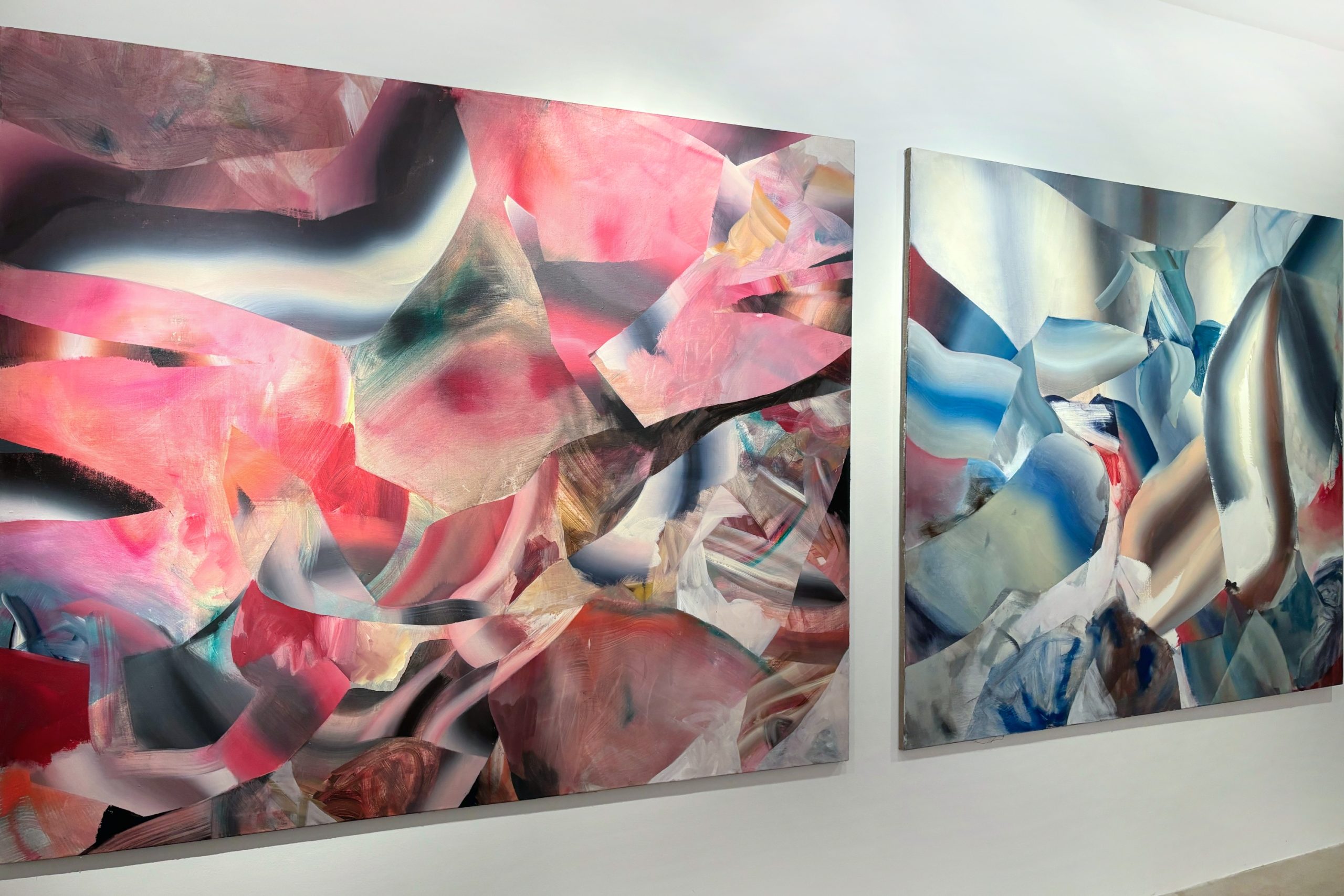
When visiting a gallery, we usually focus on what the painting depicts, and even with abstract art, we pay attention to the individual shapes, observing colors, lines, gestures…
In the case of this exhibition, however, it is essential to pay equal attention not only to the pictorial elements but also to the spaces between them.
The individual elements do not have clear boundaries, and the boundaries are not what's important. What is significant is what lies between them, the individual spaces that Neugarten uses as territorial units to construct a new world, in which no version of reality is final, nor singularly true.
Neugarten's conception of pictorial space is characterized by a high elaboration of relationships between the individual elements. Due to their common borders, it is not clear where one object ends and another begins, calling for attention. It is not even certain what is an object and what is its surroundings, what is in the front and what is in the back. An object is at the same time its surroundings, and the surroundings are simultaneously the object. Every additional element leads us further and further into the depth, not just of the pictorial space, but of the world itself. Like a rabbit hole, it leads us on a journey that has no end because the path is not given; instead, it is possible to choose from individual paths and thus explore their complexity almost indefinitely. Similar to the relationships between things in the world, here, too, the interpretative possibilities are endless.
The past, present, and future emerge simultaneously here. Recall the concept of duration in Henri Bergson's philosophy. La durée – duration as the real experience of time, as opposed to conventional time, the time of our watches. Neugarten's watches also show only numbers, not real, lived, and experienced time. The conventional conception of time is based on the notion that events occur sequentially, and life can be divided into a series of causes and effects. However, this theory contradicts our actual perception of events, which we do not perceive as consecutive but simultaneous. This discrepancy between perception and conception of time is overcome by the image, which presents the simultaneity of temporal planes, in which one can travel with the gaze and thus approach the perception of reality, unskewed by rational concepts.
Perception of time is colored by our impressions, just as the perception of reality is. Objectivity is not possible, and Neugarten does not even attempt it; on his paintings, nothing is more important than anything else. Everything is perceived with equal intensity. This intensity is also enhanced by the use of complementary colors, whose combination is uncomfortably strong.
He intends to present not a selection of what is essential but also all the surrounding circumstances. Who determines whether a tone or the silence that follows it is more significant? Whether it is the drops falling on the surface or the pauses between them? In everyday life, we constantly make choices by focusing our attention on certain aspects of reality. However, all other aspects of reality are co-present in perception, even if we may not realize it. They form a certain horizon of the thing, from which the thing is extracted by our perception. Neugarten returns things to their horizon and presents them in all possible contexts. By assembling them, they find themselves in contexts that cannot be seen in reality, and from these contexts, new visual concepts arise.
His style reflects this multiplicity and richness. It is not uniform but uses all available pictorial means to express the richness and intensity of reality. From simple brushstrokes to fragments of something realistic. Not one brushstroke is more important than another, but one after the other, equally importantly, they build the overall image.
The image becomes a space where it is possible to capture both temporal relationships, between the past and the future, and relationships between colors, or individual pictorial elements. It is a territory where Neugarten arranges pictorial elements like words into a sentence, thus giving rise to new contexts. From these new contexts arise dramas. He fills the void with individual phenomena representing various temporal stages and states, mapping the connections between them, until the creation of a new reality. Thus, the image becomes a phenomenon, bringing a new experience.
This is not about mimesis, nor about recreating reality. Neugarten's image has its own environment, its atmosphere, its lungs, its breath. It is a distinctive whole, having its own life. Just as a watchmaker assembles the wheels of a clock and sets them in motion, Neugarten's pictorial mosaic comes to life as a rare mechanism.
The theme of the mosaic becomes clearer in Neugarten's sculptures, which question the traditional conception of the image. They offer freedom of creation without the limitations of classical form. The composition necessarily submits to the shape and size of the canvas. In Neugarten's sculptures, it is the composition that determines the final shape. Thus, the image itself emerges, an undefined shape. The work does not offer us one subjective view. Neugarten's work offers multiplicity in its full breadth and presents a world as rich as we would want to perceive it.
Mgr. Kateřina Jahnová Ph.D. 2024
“The painting is a sieve for me, capturing events that would otherwise disintegrate over time.” Neugarten
“Obraz je pro mě síto, zachycující dění které se jinak rozloží v čase.” Neugarten
